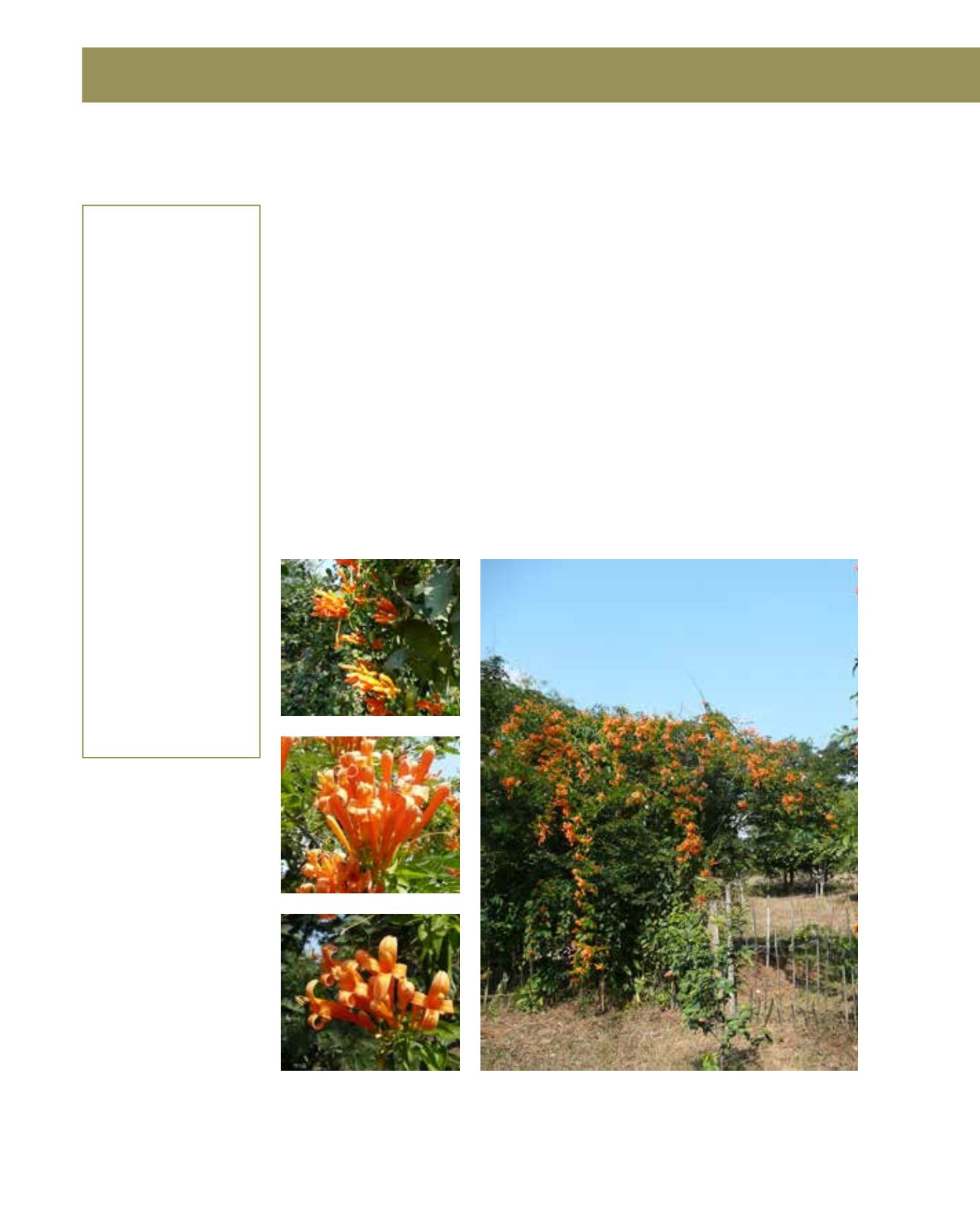

GENERAL
Origin
:
sub-tropical,
tropical
Vigour
:
fast growing
Humidity
:
semi-humid, very
humid, extremely
humid
Propagation :
sowing and
pricking out,
layer, cuttings
Maintenance :
low
CONDITIONS
Urban climate :
resistant
Dessication :
vulnerable
Stagnant water :
vulnerable
Irrigation
:
high
Salinity/ppm :
moderate (2000
ppm)
Hardiness
:
0°C
SHAPE
Type
:
climbers
Height
:
12 m-24 m
Spread
:
5 m-10 m
Foliage
:
evergreen
FLOWER
Colour
:
bright orange
Size
:
5 cm - 8 cm
Period
:
May - July
FRUIT
Type of fruit :
pod
Fruit size
:
30 cm
Toxicity
:
inedible
In appropriate locations, the Flame Vine may present its vigorous growth with lush, evergreen
leaves. In its native country, Brazil, it climbs fast by twining or tendrils to a height of 24 metres
under perfect conditions, but is limited to about 14 metres in cultivation. The tendril is a mo-
dified leaflet at the tip of a compound leaf which twines around anthropogenic structures such
as a fence, or a natural support such as trees. Such overgrowing may result in invasions that kill
shrubs or small trees in the vicinity. In its homeland tropical South America, where no frosts
occur, dormancy may be induced during a brief period of dryness. Twigs take some frost, but
protected sites are recommended initially, especially in Arriyadh. Plants recover readily after
hard pruning, which is best done after flowering. Most striking is its spectacular flowers that
measure up to 8 cm across. Abundant clusters of bright-golden or orange flowers show up mainly
in early summer, and sporadically throughout the year. They are tubular, curved and waxy. They
are followed by pods of 30 cm in length. Flame Vines do best in full sun with moderate to ab-
undant watering, and respond well to fertiliser. They can be trained along a pergola, but should
be allowed to drape over structures, since the best effect can be achieved when the flowers hang
down. They are most often multiplied by layering and cuttings. They can also be propagated at a
small scale by separating suckers.
253
Pyrostegia venusta,
Bignoniaceae
Flame Vine,
Flaming Trumpet
















